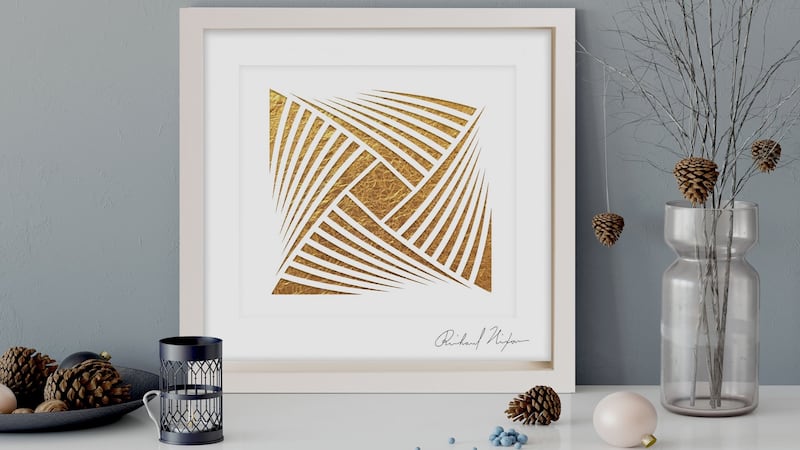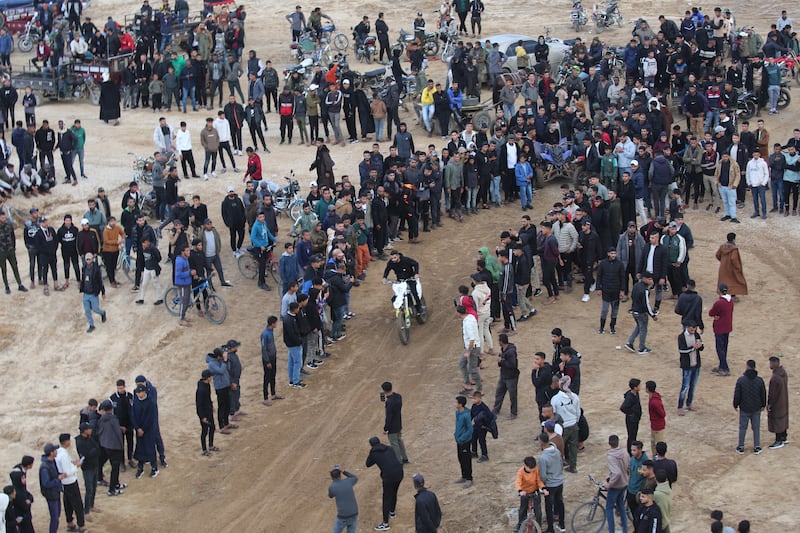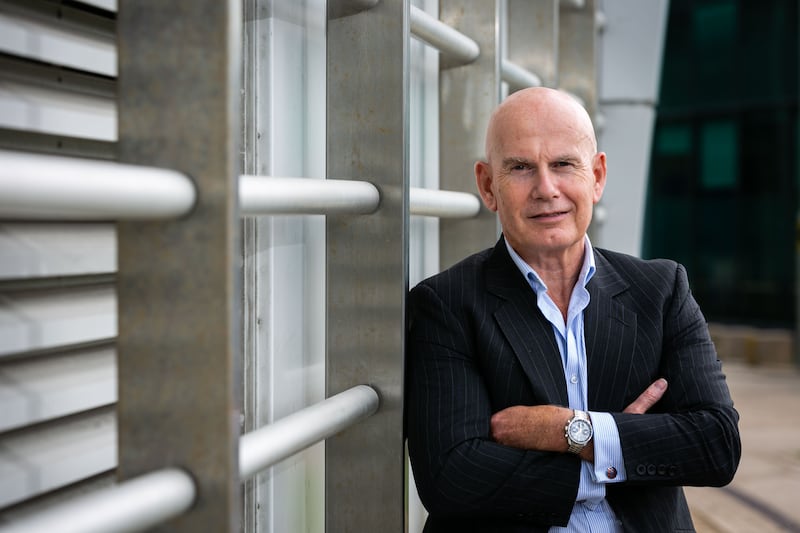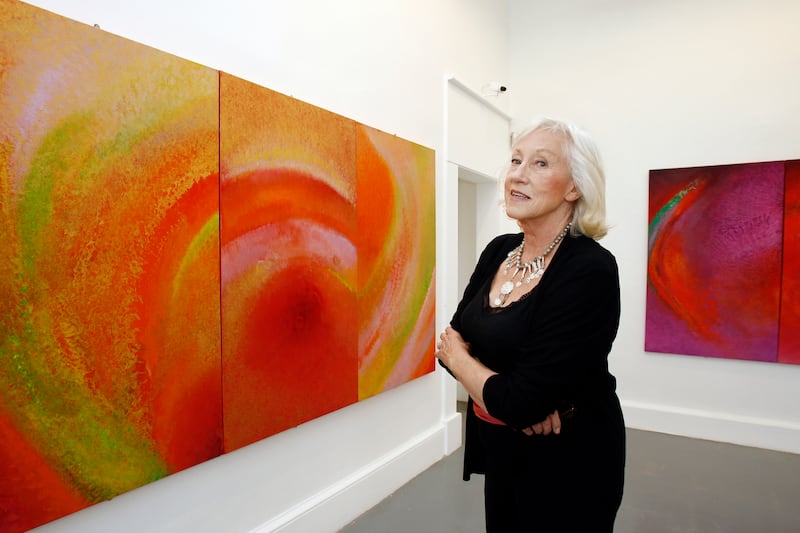The day after her mother Antoinette’s funeral in 2010, Carol McGowan and her siblings went to visit their father Gerry, who was living in a Leitrim Alzheimer’s unit. By then, he had been living with the disease since McGowan was a teenager.
“We had to put on a brave face and pretend my mother was still alive,” she recalls. “He looked across at me and said, ‘Is that Antoinette?’. It was a moment when you’re aware that everyone around is relying on you to be strong.”
Of her mother’s sudden death at the age of 72, McGowan recalls: “I’ll never forget going into the house and hearing the sounds of grief from other family members emanating from her room. I was filled with both terror and sadness in that moment. There was a huge amount of regret too – I didn’t have the time to say the things I should have.”

Within mere weeks, however, it was time to say goodbye to her father, who despite not knowing about Antoinette, was deteriorating rapidly. “In the end, my father died without my mother knowing, and my mother died without my father knowing,” says McGowan. “It’s a very different type of goodbye. Ill health was plaguing him so it was a sad release. It was like we’d had a masterclass in how to say goodbye after my mother died. We were openly telling him we loved him and physically holding him all the time in the ICU. There was no way he was going without us there.”
Losing both of her parents at 34 was, needless to say, life-changing. “It was one of the hardest moments of my life seeing my father lowered into the turned clay where my mother was laid just weeks before. I had been pretty light-hearted in my early 30s, but suddenly life became very serious,” says McGowan. “I was incredibly envious of people having their parents. Even now, when I see a mother and daughter out having lunch together, I still get that twinge. Something good happened last year and for a split second I thought I’d call my mum about it.”
After the shock subsided, McGowan’s grief journey reached a terrifying nadir in 2013. It coincided with the recession, rising rents in Dublin and the demise of a long-term relationship. “It floored me completely,” she says. “I reached a crossroads where it could have gone either way. I could have been swept away with it, or I could pull myself up off the ground. But I knew I had to live my life in a way that would make my parents proud. It gave me a bit of a fire to keep going.”
Eventually, McGowan – who had originally trained as a designer – moved to Leitrim and found her metier in mosaics, going on to train in Ravenna, Italy. And while most bereaved people would run distances from death and grief, she found herself gravitating towards the death industry.
Putting her design élan to good use, McGowan recently founded Heartstone, a company that strives to offer a more creative way to commemorate loved ones. Unorthodox commemorations have become a growth industry, with people now remembering the dead by planting trees or even creating diamonds from created remains. Heartstone, meanwhile, erects personalised mosaic feature headstones, or offers gold ‘cremation’ artworks. In the latter instance, a small amount of a person’s cremated remains are mixed with gold-leaf and used to create an artwork, which is chosen by the dying person or their loved ones. Special robot technology allows McGowan’s team to copy the handwriting of the deceased person, often added to the bottom of the artwork.
The inspiration for Heartstone initially came from the mosaic grave of the late Russian dancer Rudolf Nureyev. The headstones are multi-denominational and often created with deference to the guidelines outlined by many Irish cemeteries.
“When I saw my parents’ headstone, I felt the existing memorial didn’t do them justice or give a clue of the special characters they were – it showed nothing of their creative side,” says McGowan. “I wanted to create something durable, timeless and beautiful – something that they would be incredibly proud of. So I started researching. Catalogue after catalogue, I saw the same headstones. I thought, ‘there has to be something better than this’. We do wakes and funerals really well. I remember how selfless our neighbours were – they gathered, stealth-like and organised the catering for our parents’ wakes.
World first
“But when it comes to headstones, we lack individuality. They haven’t really changed in hundreds of years.” The artworks meanwhile, appear to be a world first, and public interest is piqued. “The inspiration came when a friend died – I wanted to create something standout that could be hung in the home and be admired, not hidden away in an urn. There are few things more precious than gold, and there’s a real beauty in that.”
Heartstone’s mosaic memorials are priced upwards of €3,500, but the gold cremation artworks are €450, for a good reason.
“Not everyone can afford funerals, and in the midst of grief, I’ve seen people make emotional choices about memorials that they can’t afford,” says McGowan. “It was important to make these accessible to people of differing financial means. No one should have to be priced out of having something so beautiful.”
Not only is McGowan immersed in the death industry, thanks to her new career she is now meeting with the dying and the grieving every day. Yet she’s keenly aware her own grief journey is something of a boon when dealing with sensitive clients.
“You can’t really create that empathy until you experience that depth of grief,” she says. “I have an incredible team working on the technical side of things, but to have that personal scope to be able to relate to people is key. You’re often dealing with people at a very raw part of their grief journey. This is, after all, the last thing they will be able to do for their loved ones.
“Other people come in and laugh and joke about the person,” she adds. “I’ve had to hold back the tears for some, and I’ve cried laughing with others. Some really want to talk about the deceased, while others just want to get it done and dusted.”
In Ireland, as well as in the wider death industry, the ‘pre-need’ sector – people making their own funeral and memorial arrangements – is growing, meaning McGowan has had clients facing their own imminent deaths.
“I’d be lying if I said it was easy. It’s a little bit like standing back in that room with my father and having to be strong,” she says. “I have the luxury of life, but these people are faced with their own demise, taking the situation into their own hands. Being clear about what their legacy will be, there’s a real beauty in it and the process becomes less scary for them. And when you talk about their chosen artwork, the mood changes immediately.”
Heartstone can certainly help a person wrench back a sense of control over their death, or the death of someone close to them, but for McGowan the life lessons in dealing with death every day are manifold. “[This work] has made me appreciate the uniqueness of people,” she says, “It’s opened my eyes to an industry that needs a fresh look. It’s also made me realise that you can never take for granted what stage of grief someone is at.”
For more information, see Heartstone.ie


















